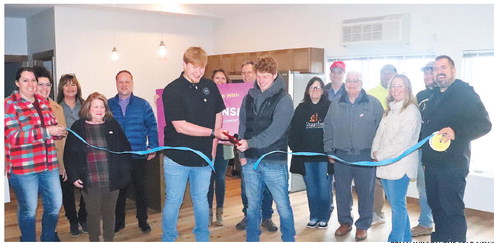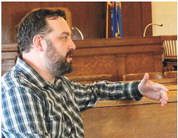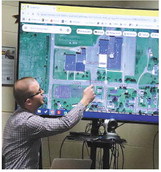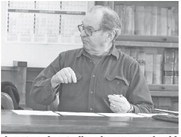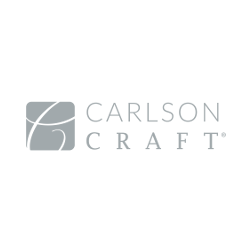Crunching numbers
Medford Area Public School District may soon join the growing number of Wisconsin employers ditching traditional insurance plans for self-insurance options.
On Tuesday, members of the district’s finance committee met with representatives from M3 Insurance to review the renewal rates from Security Health Plan (SHP) and determine a path forward. The district switched to M3 for insurance consulting services last spring, in part, based on the company’s experience in assisting employers going into self-insurance models.
At last month’s school board meeting, M3 representatives projected that SHP would have a renewal premium increase of about 15% based on industry trends and usage rates and that unless the renewal came in at under 5%, it would be more cost effective for the school district to go to self-insurance.
The renewal rate from SHP was received on Monday and on Tuesday was announced as being 14.2% Corey Palmer of M3, explained this is a blended rate taking into account the different plan options the district offers. School finance director Audra Brooks noted the district had budgeted for up to a 16% increase. In addition to the renewal rate from SHP, M3 had also been approached by Aspirus to put in a rate to renew, about 80% of the district’s employees get their healthcare through Aspirus or an Aspirus-affiliated provider. Aspirus offered the district a rate with a 22% increase.
The M3 representatives explained that any increases are a combination of inflationary trends (currently around 7% industry-wide) and actual experience. Finance committee chairman Brian Hallgren noted based on the trend, about half of the district’s renewal rate was due to industry trends with the increase due to usage around 7%.
“If we had a perfect scenario we could have only gotten to 7%,” he said. However, Medford had a heavy usage year on top of high usage rates in previous years. M3 representatives also noted that there is reorganization taking place in regional insurance providers which is tending to make them more conservative than they might have been in the past in setting rates.
Under traditional insurance models, employers are told by the insurance provider what the premiums are, for coverage based on what the provider believes usage will be. If usage is low, the provider benefits from not having to pay additional claims, but if the claims are high, the provider assumes the risk of those additional claims.
In self-insurance models, such as those being proposed for Medford Area Public Schools, the district keeps the money that would have been spent on premiums and pays claims out as they are authorized by a third party administrator. In addition, the district would pick a pharmacy benefit manager to handle the prescription drug portion of the coverage, and direct pay clinics such as Taylored Family Care, which can reduce out of pocket expenses. In self-insurance the district, rather than the insurance company also receives any pharmacy or other rebates, which can result in significant savings.
The major piece of the puzzle left for the district to determine if making the switch to self-insurance is viable, is to have a firm stop-loss rate. Stop-loss is secondary insurance that the district would have to reduce risk and cover larger claims.
Palmer explained that the stop-loss carriers, they are working with are about 95% of the way to having rates for the district, but are awaiting some claims data, through the end of August, from SHP. He said SHP has told them that information would not be available until October 1.
The goal had been for the district to have firm numbers to make a decision at this month’s school board meeting, which is Monday but this will not be possible.
Hallgren said the rates for stop-loss, which would set the upper limit of the district’s financial risk for the coming year, are needed before the board commits to self-insurance. He said if they came in too high — or if the carrier decided to “laser” high claim employees, it might not make it worthwhile to switch. “Lasering” is when carriers set a higher claim level on highrisk individuals isolating those large claims. M3 representatives said they have seen stop-loss levels as low as $75,000 and as high as $550,000.
There is administrative work that will need to happen to make a smooth switch to self-insurance so that there is as little disruption as possible for employees. Waiting until the regular board meeting at the end of October to make a decision who be a challenge. Palmer advised the district to hold off on making a formal decision now, but instead direct them to begin doing the background work needed to get everything in place. He said if the stop-loss rates come in at too high, the district would have the option of shelving selfinsurance for now and renewing with SHP for another year. However, if the rates come in as expected, the district would still be on the timeline for smooth switch to self-insurance. A special school board meeting will be held on October 8 at 5:30 p.m. to formally decide on making the switch to self-insurance.
Board president Dave Fleegel questioned what would change for employees in making a switch. Palmer noted that the provider options would in many cases increase with the opportunity for the district to add other local providers for things like chiropractic care or other services. He said the biggest change would be on the pharmacy side, where people who are on high cost medications that need prior authorizations would likely have to go through the authorization process again. For brand name medications, this may result in having to switch to different brands, something Palmer said happens often even with renewals in traditional insurance.
Committee member John Zuleger also asked about ways to encourage employees to use Taylored Family Care. Under the self-insurance models considered by the district, visits to the Taylored Family Care would be entirely covered.
Palmer suggested an option would be to reduce the contribution to health savings accounts (HSAs) by $200 then the district would set up that employees whose families made appointments with the direct care clinic would get an extra $200 put into their HSA. He said this would be a cost neutral way to incentivize people to use it.
“That comes off more as a punishment than an incentive,” Fleegel said.
Committee members Steve Deml also objected to the idea of encouraging people to make appointments that they may not need just to get an incentive.
District administrator Laura Lundy agreed and said just letting employees know they can use the provider at no cost to them and with no deductible would be enough to get people to go there.
Switching to self-insurance is a longerterm commitment for the district. While contracts with individual vendors will be only for a year at a time, Palmer said it is at least a three-year commitment by the district to see any benefit.
The district currently spends about $8.1 million on heath insurance premiums a number that would jump to about $9.2 million a year if the district renewed with SHP. The district’s goal would be to stabilize the insurance and ideally see savings in years to come.

